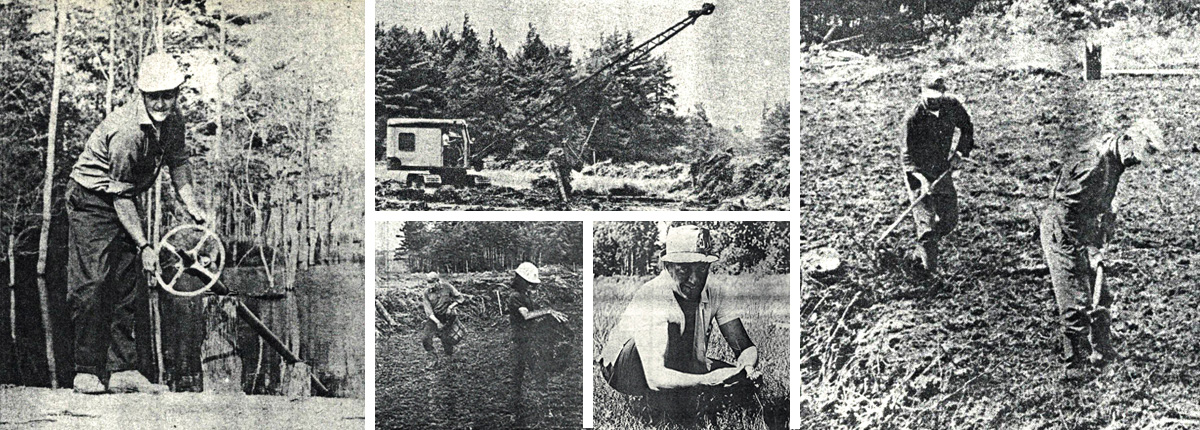Last updated: September, 2017
Iroquois Cranberry Growers announced that they were shutting down operations this year. They’ve been good friends and business partners over the years, and we will miss them. We’ve heard lots of wild stories and rumours – the Bala Cranberry Festival is closed. We’re closed. They didn’t market well/manage well…
Let us start by clearing a few things up. First the ‘who’s who:’ a love of cranberries connects three separate entities. A group of volunteers established the Bala Cranberry Festival in 1986 to celebrate the town’s proximity to Ontario’s only two cranberry farms. Ontario’s two cranberry farms were Iroquois Cranberry Growers (off highway 400) and Johnston’s Cranberry Marsh (off highway 169).
As to business acumen, we have nothing but respect for all the men and women who worked hard to make Iroquois Cranberry Growers a success. They farmed well and added value to their fruit in a variety of ways. The bottom line is, the cranberry market is difficult and has been for some time.
In the 90’s, a market shortage caused a spike in the price of cranberries. This encouraged expansion. Growers added acreage. Quebec aggressively sought to establish a cranberry industry using government backed loans. The lag time from planting to full production is five years. When all these acres finally came online, they caused a market surplus and the price crashed. Some say it fell as low as prices in the late 1800’s. In 20 years, the market hasn’t recovered. As fast as new markets and products can be developed, other factors arise to keep the price low. New, better producing varieties mean growers are getting bigger crops. The weather has been favourable to bumper crops in some areas. Grower organizations voted to reduce production by 20%, but cranberries are now being planted in Chile and other non-traditional areas. You get the idea.
Cranberry growers make a huge investment in their farms. The cost of establishing and maintaining an acre of cranberries until it produces is over $100,000. The break even point on new acreage used to be 10 years (when the price was much higher). Because of the unique growing conditions cranberries enjoy, switching to another crop on the same land is impossible.
We came perilously close to losing our farm twice in the last 20 years, and we still have to work incredibly hard to stay afloat. It’s not easy, and we respect and understand the difficult decision the Wahta Mohawks made to close their farm.
When Iroquois Cranberry Growers was started, the band had less than 100 members. Sid Commandant was chief, and his brother, Ken Commandant, was a council member. Bud Rennie was the Band Administrator. These names, and more, were involved in the research, consultation, surveying and planning required to launch a commercial cranberry operation. The band approached Orville Johnston, our founder, to be consultant manager for the project. A government cost-sharing program helped plant half an acre in 1969 and a further 10 acres by 1971. The farm eventually grew to 68 acres.
“By the mid 1990s Iroquois Cranberry Growers was deemed to be the single most successful Aboriginal Community owned business in Canada,” wrote Brent Cooper (Gravenhurst Banner, April 25, 2017). In 1971, Paula McKee wrote in The Muskoka Sun, “The cranberry marsh is a prosperous venture that the Reserve can certainly be proud of. Their ambition and creativity are proving to themselves and others that they can prosper and flourish. They are progressing materially and mentally, as they realize their own potential as valuable members of a community.”
The cranberry farm was an integral part of the Wahta Mohawks’ development and growth as a community, and we know they will continue to prosper and flourish without it. We will miss them as a business partner even as we look forward to seeing what they do next.
Photo Credits: Pictures reproduced from Paula McKee’s article in The Muskoka Sun dated July 8, 1971.
Clockwise from left:
- Bud Rennie, ICG’s first farm manager
- Dragline, driven by Richard Strength, used to establish the beds for planting
- Hand leveling the bed
- Orville Johnston, consultant manager for the project
- Spreading vines to plant the bed

